Posted by · Leave a Comment
It’s been four weeks for the cherry wine and it’s time to rack, or siphon off, the liquid from the must (this is the fruit “by-product” which has settled to the bottom of the carboy).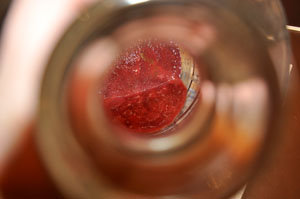
I lifted the five-gallon carboy to the kitchen counter the night before so the must would have a chance to rest undisturbed, overnight, and settle once again. {You need the full vessel higher than the empty vessel to which you will transfer the wine).
Next, be sure your equipment is clean and sterile for the transfer.
Once the siphon is going, it will likely empty the carboy in one continuous, steady draw. 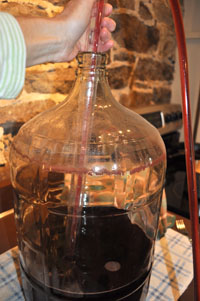 Make sure the intake is not resting in the must. Remember, the object is to capture only “clean” wine in this rack—leave behind as many particles as possible.
Make sure the intake is not resting in the must. Remember, the object is to capture only “clean” wine in this rack—leave behind as many particles as possible.
You will probably see a little bubbling activity in this transfer. There will still be yeast present and the agitation will activate it.
Once the transfer is complete, get your fermentation lock on. One fruit gnat carries enough bacteria to ruin the batch (amazing, right?). Find a place for your carboy to call home for the next few months where it’ll be out of the way and the temperature will be somewhat regulated.
Bottling for this batch of cherry wine will occur close to the holidays!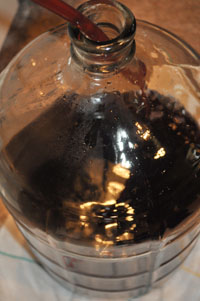

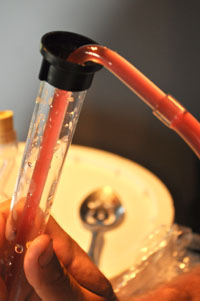 from the “must.”
from the “must.”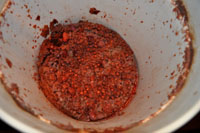
 After I took the photo of the yeast bubbles, we added handfuls of marbles to bring the liquid up into neck of the carboy (you want as little interaction between liquid and air as possible).
After I took the photo of the yeast bubbles, we added handfuls of marbles to bring the liquid up into neck of the carboy (you want as little interaction between liquid and air as possible).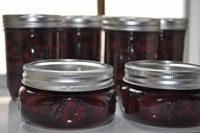 When you can fruits or veggies, you hope for the best…the best quality, the best “seal,” the best (and prettiest) presentation or “pack.”
When you can fruits or veggies, you hope for the best…the best quality, the best “seal,” the best (and prettiest) presentation or “pack.”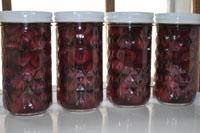 Sometimes, everything comes together on the very first go-round – like the Ball recipe for Spirited Cherries I attempted for the first time yesterday.
Sometimes, everything comes together on the very first go-round – like the Ball recipe for Spirited Cherries I attempted for the first time yesterday.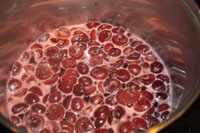 So very delicious…and simple…and pretty…that I just had to do a second batch immediately! These will be a perfect addition to a main course or dessert, especially in the winter when you seek out those bolder flavors.
So very delicious…and simple…and pretty…that I just had to do a second batch immediately! These will be a perfect addition to a main course or dessert, especially in the winter when you seek out those bolder flavors.
